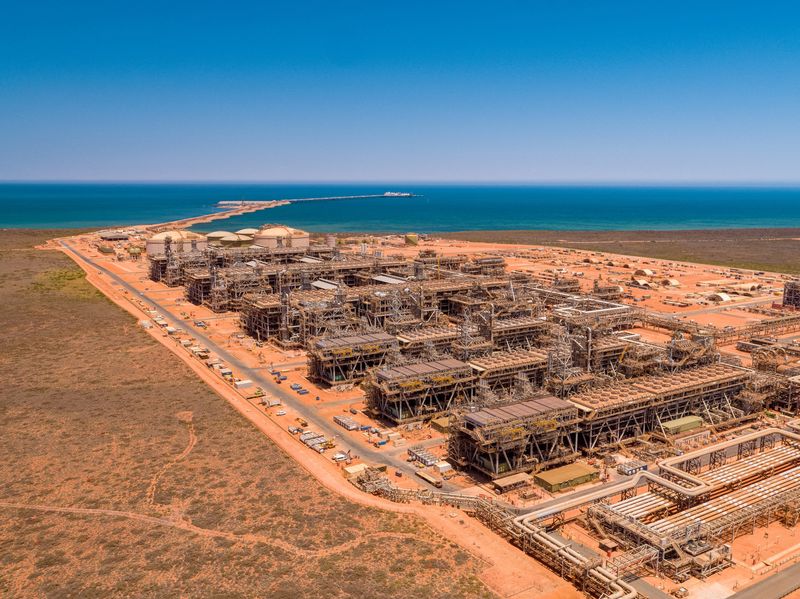By Emily Chow and Yuka Obayashi
SINGAPORE/TOKYO (Reuters) - Long before labour unrest at liquefied natural gas (LNG) plants threatened to disrupt supplies, Australia was on track to lose its crown as the world's top exporter due to green government policies, measures to protect domestic energy needs and expansion plans from Qatar and the United States.
Workers at two LNG platforms owned by Chevron (NYSE:CVX), and that account for over 5% of global supply, plan to escalate the rolling strikes they began last week after failing to resolve disputes over pay and conditions.
While the industrial action has rattled European gas markets, buyers of the Australian super chilled fuel say they're more worried about a series of measures introduced by the government to meet domestic energy needs, manage soaring gas prices and reduce emissions.
"There is a concern that the willingness to invest in Australia and confidence in the country may decline," said a spokesperson for Japan's Kyushu Electric Power, which has long-term contracts with Chevron's strike-hit Wheatstone plant and Woodside (OTC:WOPEY) Energy Group's North West Shelf facility off the coast of Western Australia.
Australia was the world's top LNG exporter last year, sending out 80.48 million metric tons according to Kpler data, but export volumes have fallen behind the United States and Qatar for the first eight months of 2023.
China and Japan are Australia's main buyers, followed by South Korea and Taiwan.
Japan's top energy producer Inpex, which is considering expanding its Ichthys LNG project in Australia, said the government measures "could reduce investment in Australian LNG projects, which may have a significant impact on the development and growth" of the industry.
"We will continue to call on the Australian government to maintain and improve an appropriate investment environment," a spokesperson said.
Asked about these concerns, a spokesperson for federal Minister for Resources Madeleine King said Australia was committed to remaining a long-term, reliable supplier of resources and energy to its trading partners, and was committed to being a stable and secure destination for investment.
CONSIDERABLE COMPETITION
LNG buyers are particularly sensitive to anything that affects the security of their supplies, especially after Russia's invasion of Ukraine sent European buyers scrambling for alternatives to Russian piped gas, triggering a surge in prices.
For Australia, the supply concerns coincide with plans by the United States, which has the world's largest liquefaction capacity, and state-owned QatarEnergy to ramp up production.
"We've certainly seen Australia's reputation being affected as some existing buyers expressed interest in diversifying their suppliers for long-term supply," said Ryhana Rasidi, LNG analyst at analytics firm Kpler.
"This is somewhat reflected in the fact that a lot of the new contracts we've seen being signed have been with Oman, Qatar and the U.S. - whereas very little has been with Australia."
QatarEnergy, which plans to boost capacity by over 60% to 126 million metric tons per year in 2027, has signed deals to supply major Chinese buyers.
"Australia is the closest gas supplier we can get. By far, Australia, U.S. and Qatar are the three pillars in LNG supply chain. If any of them is having problems, we would indeed be nervous," said Jane Liao, vice president at state-run energy firm CPC Taiwan.
As well as its political stability, its proximity to Asia might be Australia's saving grace, industry analysts say.
Japanese LNG importers including Tohoku Electric Power, Kyushu Electric Power and Osaka Gas say Australia is and will continue to be a stable and important supplier, company spokespersons said.

"Ties are very strong between North Asia and Australia as a legacy supplier, so many participants are keen to continue the relationship," said Kaushal Ramesh, LNG analyst at Rystad Energy.
"Regulatory annoyance aside, there are still a lot of advantages."